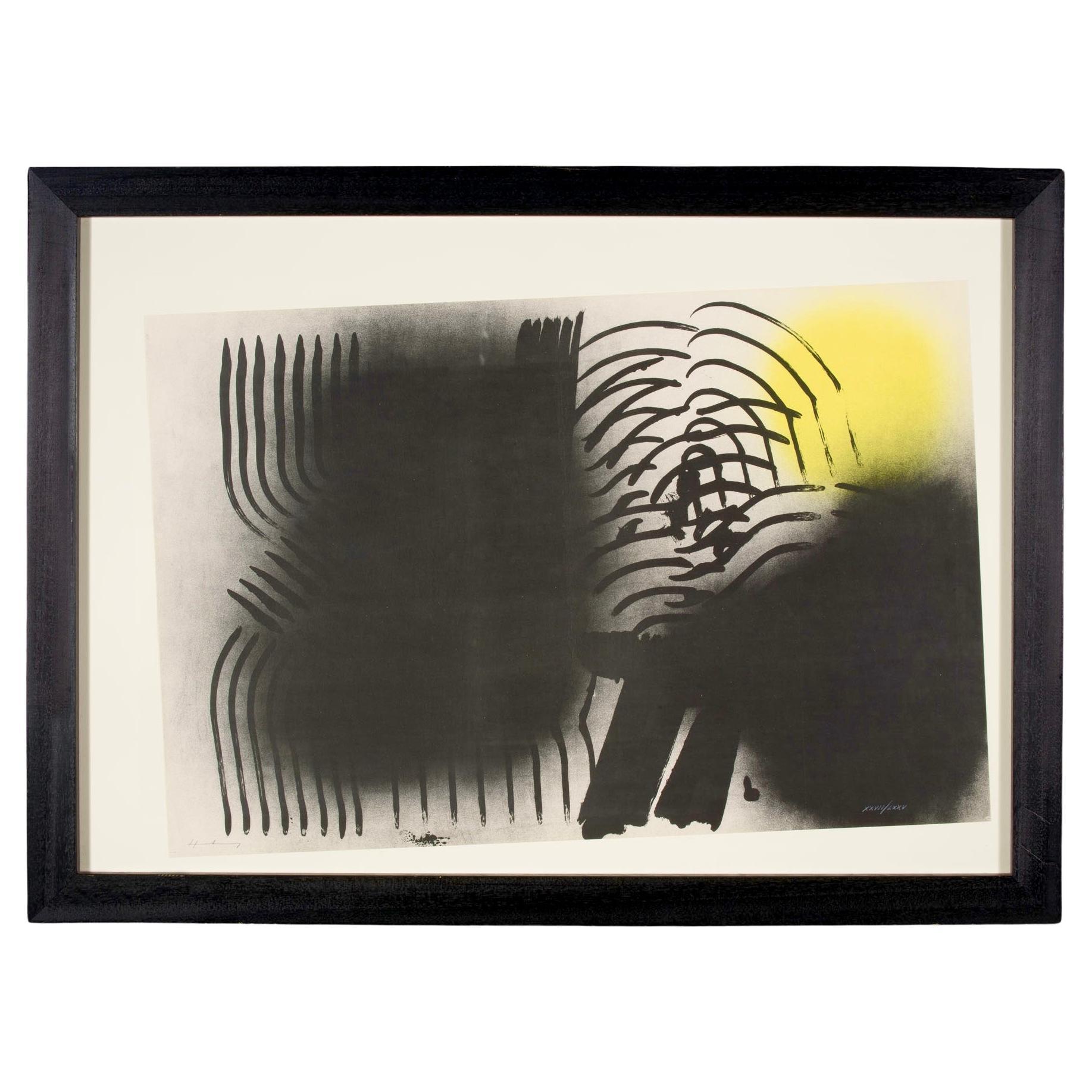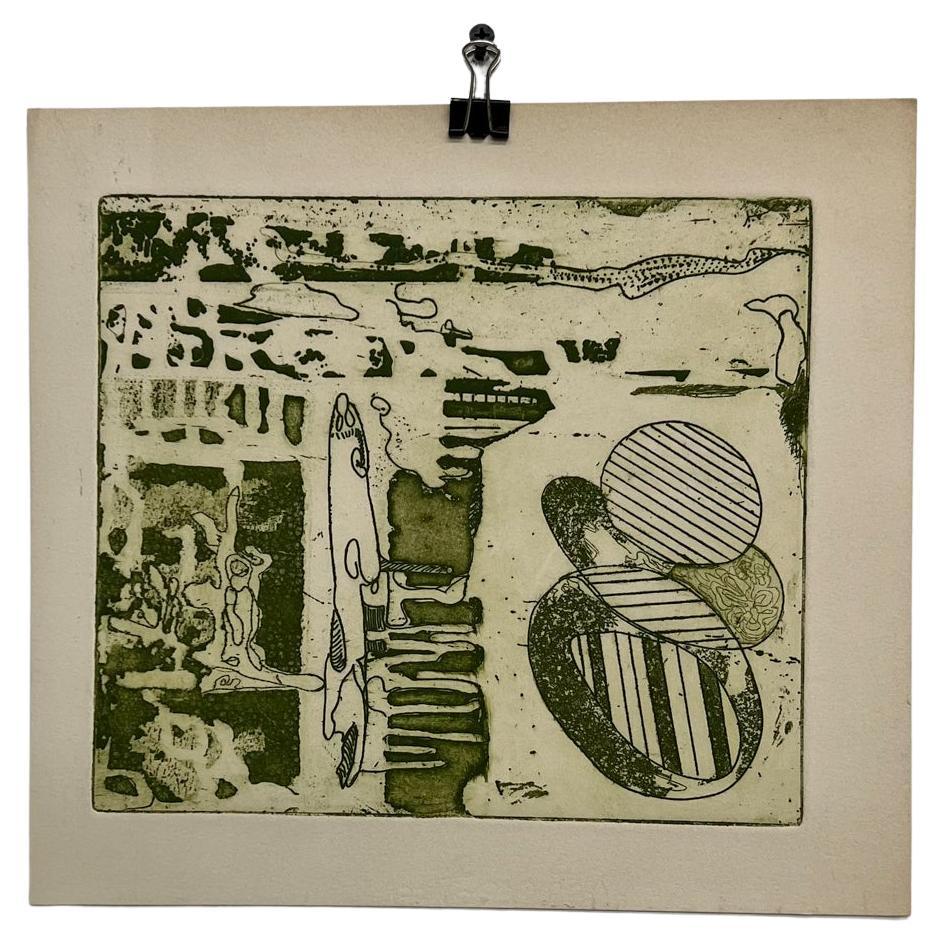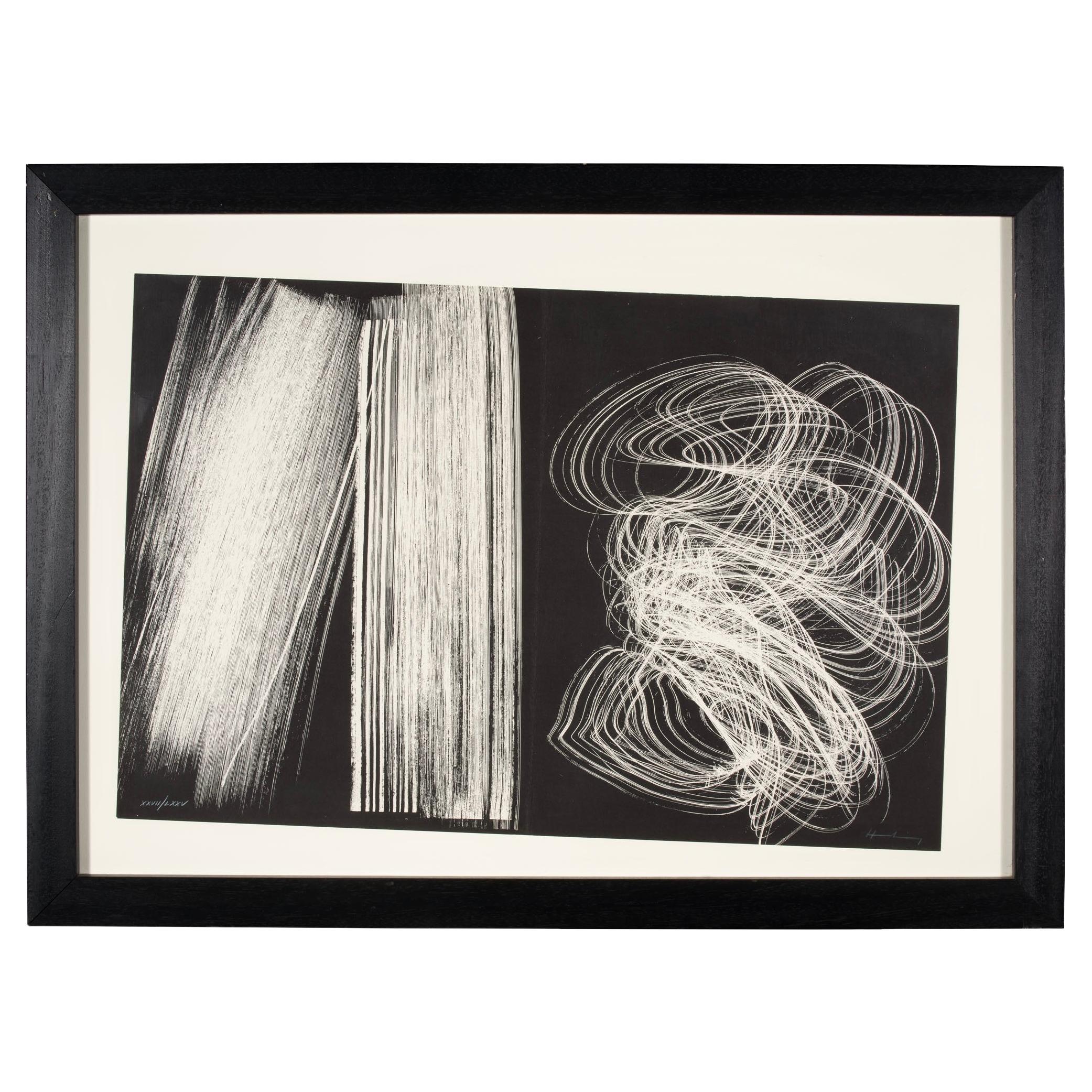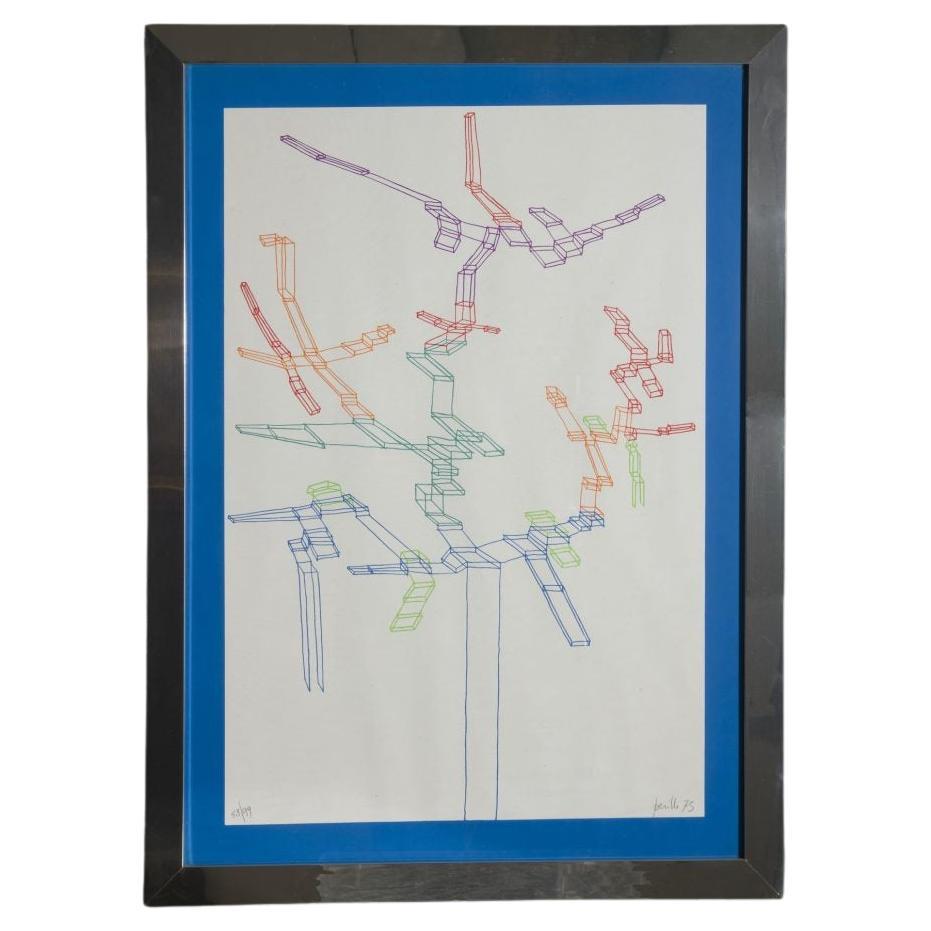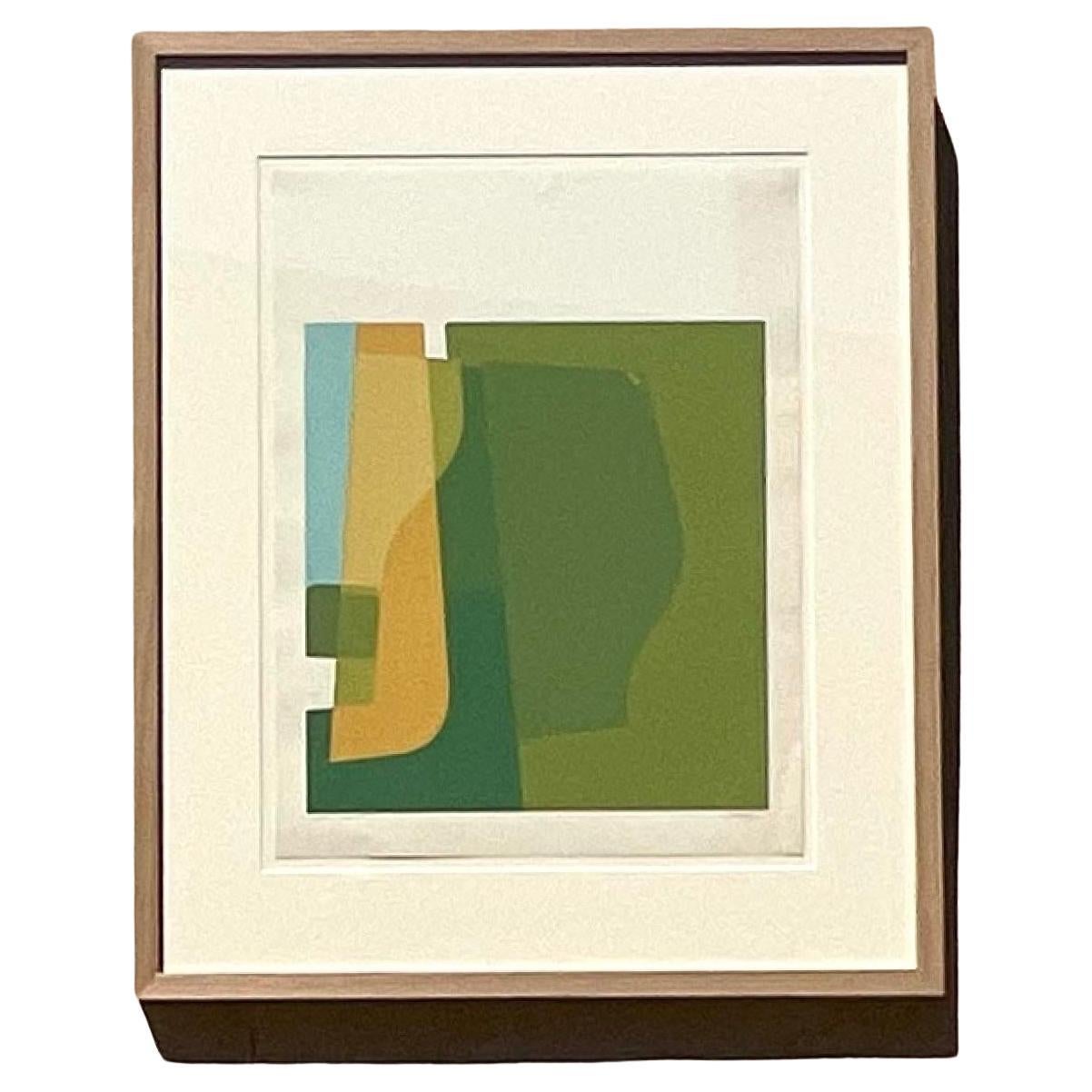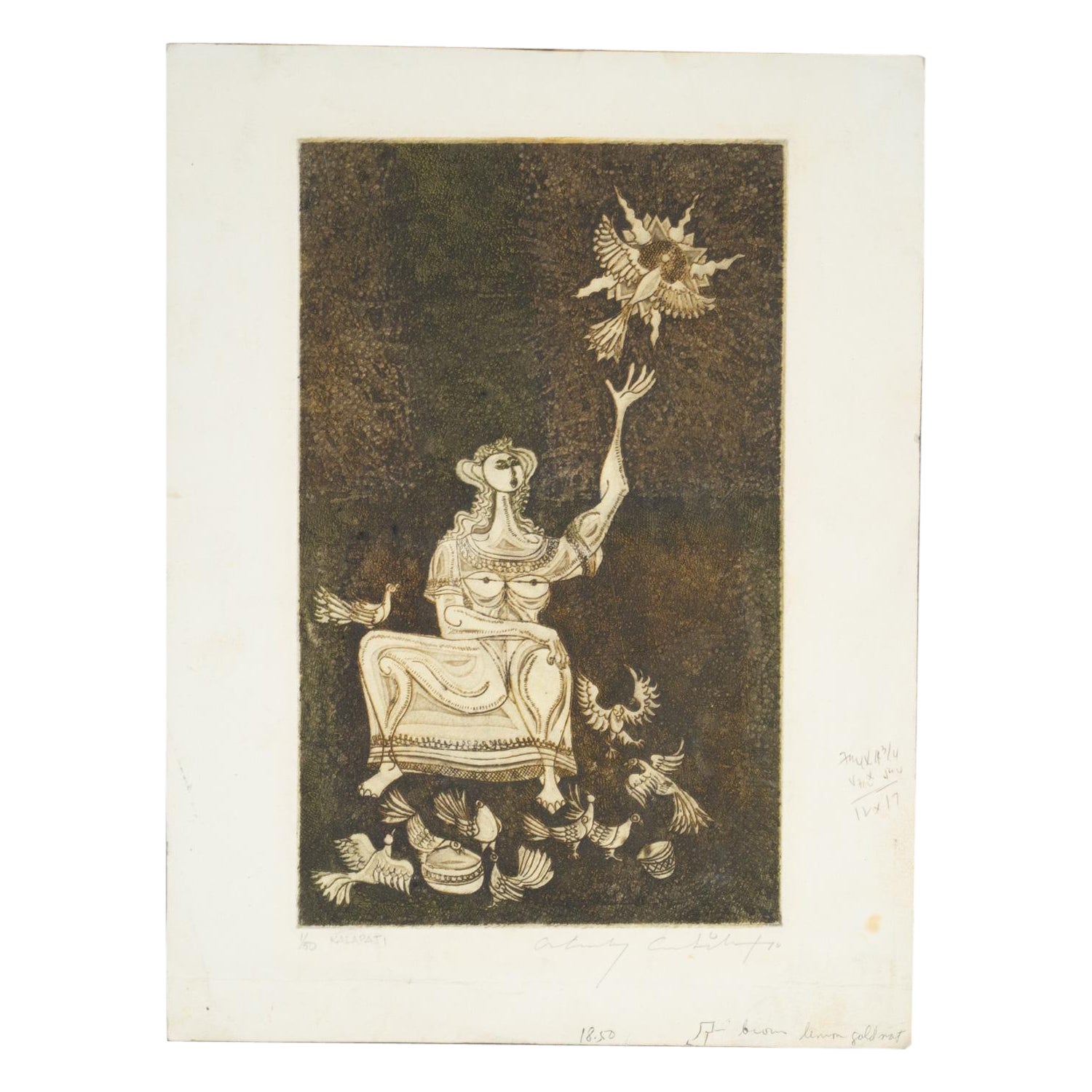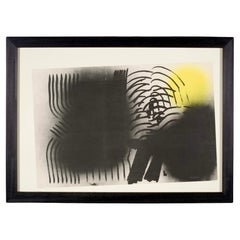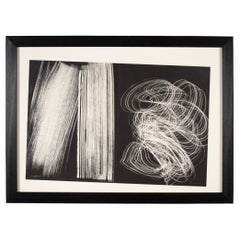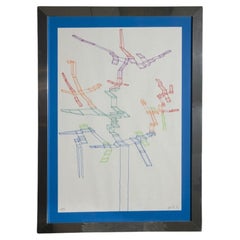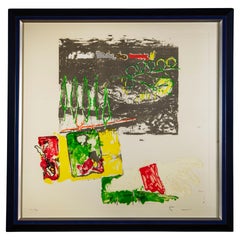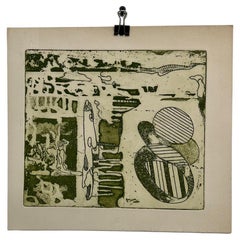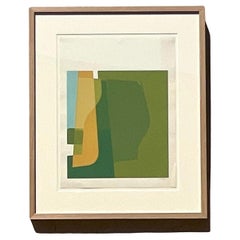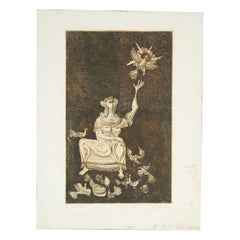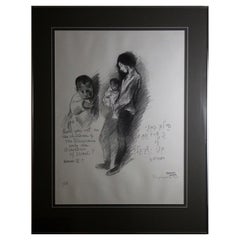Items Similar to 1970s Modern Antonietta Raphaël Signed Work on Paper
Want more images or videos?
Request additional images or videos from the seller
1 of 8
1970s Modern Antonietta Raphaël Signed Work on Paper
About the Item
Rare and important colour lithograph “Prova d’autore” signed localised and dated ‘Raphael Roma “70”.
It depicts in his unmistakable style a couple pictured in an intimate but discreet pose.
Antonietta Raphaël, the wife of Mario Mafai and co-founder of the Roman School, is here at the highest level of her artistic expression.
This artwork, never before on the market, comes from an important private collection and is beautified by an impressive original frame in silvered wood, in almost perfect condition.
Every item of our Gallery, upon request, is accompanied by a certificate of authenticity issued by Sabrina Egidi official Expert in Italian furniture for the Chamber of Commerce of Rome and for the Rome Civil Courts.
Dimensions are frame included
The painting is also protected by glass
Antonietta Raphaël (1895 – 5 September 1975) was an Italian sculptor and painter of Jewish heritage and Lithuanian birth, who founded the Scuola Romana (Roman School) movement together with her husband Mario Mafai.
She was an artist characterised by a profound anti-academic conviction, also affirmed by her sculptures which, especially after World War II, dominated her output.
They highlighted the tender and vibrant carnality present in stone, with works such as Miriam dormiente (Sleeping Miriam) and Nemesis.
A rabbi's daughter, Raphael moved to London with her mother after her father's death.
There she attended the British Museum, and came to know Jacob Epstein and Ossip Zadkine, the renowned French sculptor of Russian origin and member of the Expressionist movement.
However, Antonietta in those days concentrated on studying music, and eventually graduated in piano at the Royal Academy of Music and teaching solfeggio in the East End.
At her mother's death in 1919, she moved to Paris and in 1924 to Rome. In 1925 Antonietta attended the Accademia di Belle Arti, befriended artist Mario Mafai and went to live with him, in a long-lasting relationship. They had three daughters: Miriam (1926), a journalist, partner of Communist politician Giancarlo Pajetta; Simona (1928) member of the Italian Senate and author; and Giulia (1930), a scenographer and costume designer.
In 1927, Raphael and Mafai moved to an apartment in via Cavour in Rome which quickly became a meeting point for literati including Giuseppe Ungaretti and Leonardo Sinisgalli, as well as young artists including Scipione, Renato Marino Mazzacurati, and Corrado Cagli.
This represented the birth of the Scuola Romana.
In 1929, Raphael exhibited for the first time at I Sindacale of Lazio, supported by art historian Roberto Longhi.
In 1930 she and Mafai went to Paris, and there she began to concentrate on sculpture rather than painting.
In 1932 she was in London and met Jacob Epstein. She then moved permanently to Rome and started working on her masterpiece Fuga da Sodoma (Escape from Sodom), working as a guest of sculptor Ettore Colla in his studio for a year.
Between 1936 and 1938 she exhibited at the Sindacali.
Her plastic shapes, during this phase, show a lack of influence from any Italian sculpture movement of the period, but there are distinct references to Emile-Antoine Bourdelle.
Due to the Fascist racial laws and their implementation, Raphael escaped to Genoa together with her husband and daughters.
The family was assisted and kept safe by art collector Emilio Jesi and philanthropist Alberto Della Ragione.
During World War II (from 1943 to 1945) Raphael stayed in Rome with her daughter Giulia, then moved again to work in Genoa with an influential group of older sculptors, though one that did not have a common style.
This included Edoardo Alfieri, Nanni Servettaz, Raimondi, Camillo Maine, Lorenzo Garaventa, Sandro Cherchi, Agenore Fabbri, Roberto Bertagnin (brother-in-law of Arturo Martini) and Luigi Navone.
In 1948, Raphael exhibited at the Biennale di Venezia, after a difficult period of financial restrictions.
As from 1952 art critics began fully appreciating Raphael's work and selected pieces were exhibited at the Galleria dello Zodiaco in Rome.
In 1956 she travelled to China, where she exhibited in Beijing her artwork together with Aligi Sassu, Agenore Fabbri, Giulio Turcato and others - continuing other exhibitions throughout Europe, Asia, and the Americas.
At the 8th Rome Quadriennale of 1959-1960, dedicated to the Scuola Romana, many of her works were presented to the public, placing her among the greater exponents of this school.
By this stage, Raphael was working almost exclusively on sculpture, leaving aside painting.
Due to her free and open personality, and her diverse cultural experiences, Antonietta Raphael introduced within the Roman circle a note of unconventional internationalism.
During the Via Cavour years, she produced portraits and landscapes characterised by a formal simplification, with compositive deformations in between the Naïve and the Chagallian oneiric fantasy.
From 1932, her sculptures achieved vigorous naturalistic tones with symbolic and monumental emphases, recalling eastern art cultures.
This artwork is shipped from Rome. Under existing legislation, any artwork in Italy created over 70 years ago by an artist who has died can requires a license for export regardless of the work’s market price. The shipping may require additional handling days to require the license according to the destination of the artwork.
- Creator:Antonietta Raphaël (Artist)
- Dimensions:Height: 22.84 in (58 cm)Width: 31.5 in (80 cm)Depth: 0.79 in (2 cm)
- Style:Mid-Century Modern (Of the Period)
- Materials and Techniques:
- Place of Origin:
- Period:
- Date of Manufacture:1970
- Condition:Minor fading.
- Seller Location:Roma, IT
- Reference Number:1stDibs: LU4827243378832
About the Seller
5.0
Platinum Seller
Premium sellers with a 4.7+ rating and 24-hour response times
Established in 2005
1stDibs seller since 2019
88 sales on 1stDibs
Typical response time: 3 hours
- ShippingRetrieving quote...Shipping from: Rome, Italy
- Return Policy
Authenticity Guarantee
In the unlikely event there’s an issue with an item’s authenticity, contact us within 1 year for a full refund. DetailsMoney-Back Guarantee
If your item is not as described, is damaged in transit, or does not arrive, contact us within 7 days for a full refund. Details24-Hour Cancellation
You have a 24-hour grace period in which to reconsider your purchase, with no questions asked.Vetted Professional Sellers
Our world-class sellers must adhere to strict standards for service and quality, maintaining the integrity of our listings.Price-Match Guarantee
If you find that a seller listed the same item for a lower price elsewhere, we’ll match it.Trusted Global Delivery
Our best-in-class carrier network provides specialized shipping options worldwide, including custom delivery.More From This Seller
View AllHans Hartung 1970s Signed and Numbered Work on Paper
By Hans Hartung
Located in Roma, IT
Hans Hartung 1970s signed and numbered on pastel work on paper
Very important signed and numbered colour lithograph
Available one pair
Title "Farandole"
Signed lower left
Numbered ...
Category
Vintage 1970s French Modern Prints
Materials
Glass, Wood, Paper
Hans Hartung 1970s Signed and Numbered Black and White Work on Paper
By Hans Hartung
Located in Roma, IT
Hans Hartung 1970s signed and numbered on pastel work on paper
Very important signed and numbered colour lithograph
Available one pair
Title "Farandole"
Signed lower right
Numbere...
Category
Vintage 1970s French Modern Prints
Materials
Glass, Wood, Paper
Contemporary Signed Achille Perilli “Systematic 1°“ Work on Paper
By Achille Perilli
Located in Roma, IT
Achille Perilli “Systematic 1°“
Lithography
Achille Perilli Final lithography made for Engineering Company C. Lotti e Associati Roma.
Editions numbered from 1/99 to 99/99 plus XXX ...
Category
Mid-20th Century Italian Mid-Century Modern Prints
Materials
Glass, Wood, Paper
1980s Signed Mario Schifano Artwork on Paper
By Mario Schifano
Located in Roma, IT
Materic silkscreen print “Ondate di gelo” (Frost Waves) by Mario Schifano.
Signature and numbering in pencil on front side.
Dry stamp of the artist on front.
Edition F.C. (Not for sale) 23/30. Framed work.
The artwork for sale is part of the collection 'Best Seller: 31 graphic works by Mario Schifano' edited by Edizioni Torcular Edition on handmade paper with Torcular watermark by Cartiera Magnani of Pescia Printer: Egiziano Piersantini
This artwork, never before on the market, comes from a private collection and is beautified by an impressive original frame in natural wood, in almost perfect condition.
The painting is also protected by glass
Every item of our Gallery, upon request, is accompanied by a certificate of authenticity issued by Sabrina Egidi official Expert in Italian furniture for the Chamber of Commerce of Rome and for the Rome Civil Courts.
Mario Schifano (Homs 1934 - 1998) was an Italian painter and filmmaker.
Together with Franco Angeli and Tano Festa he represented a fundamental point of Italian and European Pop Art.
Perfectly integrated in the international cultural scene of the 1960s, he was reputed to be a prolific, exuberant and drug-addicted artist.
A keen student of new painting techniques, he was among the first to use computers to create works and was able to process images from the computer and transfer them onto emulsified canvases.
Mario Schifano was born in Italian Libya and after the end of the war returned to Rome where, due to his restless personality, he left school early to follow in his father's footsteps who worked at the Etruscan museum of Villa Giulia as an archaeologist and restorer.
Thanks to this experience, he approached art, initially producing works that were influenced by Informal Art.
His first solo exhibition was at the Galleria Appia Antica in Rome in 1959.
In the late 1950s, he participated in the artistic movement Scuola di Piazza del Popolo together with artists such as Francesco Lo Savio, Mimmo Rotella, Giuseppe Uncini, Giosetta Fioroni, Tano Festa and Franco Angeli.
The group met at Caffè Rosati, a Roman café then frequented by Pier Paolo Pasolini, Alberto Moravia and Federico Fellini, among others, and located in Piazza del Popolo, from which they took their name.
In 1960, the group's works were exhibited in a group show at Galleria La Salita.
In 1961 he exhibited in a solo show at Galleria La Tartarugadi Plinio De Martiis in Rome.
In the meantime, he had met, among others, his future lover Anita Pallenberg at the Caffè Rosati, with whom he made his first trip to New York in 1962, where he came into contact with Andy Warhol and Gerard Malanga at the Factory.
During this period he participated in the New Realists exhibition at the Sidney Janis Gallery, a group show that included most of the young artists of Pop art and Nouveau Réalisme, including Andy Warhol and Roy Lichtenstein.
He then had the opportunity to participate in the New York social scene, which led to his first experiments with LSD.[6]
On his return from New York, after participating in exhibitions in Rome, Paris and Milan, he took part in the XXXII International Art Exhibition in Venice in 1964.
During this period, his paintings defined as 'Anemic Landscapes', in which it is memory that evokes the representation of nature with small details or allusive inscriptions, and the reinterpretations of art history that later led to his famous pictorial works on futurism appear in embryo.
In Rome, he met and frequented Marco Ferreri and Giuseppe Ungaretti to whom, already in his 80s, he offered an evening at Peyote.
But one of the acquaintances of this period that most influenced him was that with Ettore Rosboch, with whom he formed a deep friendship, based on a shared passion for music. In those years, also thanks to their constant trips to London, the two became friends with the Rolling Stones, to whom they introduced Anita Pallenberg, who in 1965 began a relationship with Brian Jones, and years later became Keith Richards' partner.
In 1969, the flat in Piazza in Piscinula in Rome that then belonged to Schifano was used by Ferreri as the set for the film Dillinger is Dead, on the walls of which some of the artist's paintings can be seen.
In 1969, the Rolling Stones dedicated the song Monkey Man to Mario Schifano.
In 1971 some of his paintings were included by Achille Bonito Oliva in the exhibition Vitalità nel negativo nell'arte italiana 1960/70.
Many of his works, the so-called 'monochromes', present only one or two colours, applied on wrapping paper glued on canvas.
The influence of Jasper Johns was manifested in the use of numbers or isolated letters of the alphabet, but in Schifano's way of painting analogies can be traced to the work of Robert Rauschenberg.
In a painting from 1960, one can read the word 'no' painted with drips of colour in large capital letters, as in a wall graffiti.
The influence of Pop art can be seen in all the artistic production of Mario Schifano, who was fascinated by new technologies, advertising, music, photography and experimentation.
In particular, the artist's closest works to Pop Art are those of the 1980s.
Among the most important works of this period are the Propagande, a series dedicated to advertising brands (Coca-Cola and Esso) in which we have a clear example of the conveyance of commonly used and easily recognisable images quoted in multiple ways or details of them, bicycles, flowers and nature in general (among the most famous series are the Paesaggi anemici, Vedute interrotte, L'albero della vita...
Category
Vintage 1980s Italian Mid-Century Modern Prints
Materials
Canvas, Glass, Wood
Modern Pair of Oriental Numbered and Signed Etching
Located in Roma, IT
1970s Pair of important numbered and signed etching.
Japan 1973.
Every item of our Gallery, upon request, is accompanied by a certificate of authenticity issued by Sabrina Egidi off...
Category
Vintage 1970s Japanese Modern Prints
Materials
Paper
Giorgio de Chirico 1960s Original Signed Lithography
By Giorgio De Chirico
Located in Roma, IT
Lithograph with golden yellow background
Signed in pencil lower left ‘P d A’ Artist's proof
Signed in pencil lower right ‘G. De Chirico’
Inscribed in the centre in pencil ‘Bucintoro...
Category
Mid-20th Century Italian Mid-Century Modern Prints
Materials
Wood, Paper
You May Also Like
Mamie Troxell Organic Modern Abstract Artwork on Paper 1970s Signed
Located in Chula Vista, CA
Mamie Troxell organic Modern abstract artwork 1970s signed
Measures: 11.18 x 7.13 art 9 x 7.75
Preowned original vintage condition art
See i...
Category
Vintage 1970s Mid-Century Modern Prints
Materials
Paper
$280 Sale Price
20% Off
Vintage 1970s Abstract Original Lithograph on Paper
Located in west palm beach, FL
Vintage abstract lithograph of various curved shapes in differentiating shades of green. The shape come together to create a tasteful mini...
Category
Mid-20th Century American Prints
Materials
Glass, Wood, Paper
$2,280 Sale Price
20% Off
Orlando Castillo, Kalapati, ETCHING ON PAPER, SIGNED, 1970-1975
Located in San Francisco, CA
ABOUT
Kalapati, etching on wove paper, 1/50 limited edition.
CREATOR Orlando Castillo (b.1947).
DATE OF MANUFACTURE 1970-1975.
MATERIALS AND TECHNIQUES Etching on pap...
Category
Mid-20th Century Philippine Mid-Century Modern Prints
Materials
Paper
Raphael Soyer Woman and Child 1969 Modern Lithograph on Paper 114/125 Framed
By Raphael Soyer
Located in Keego Harbor, MI
A contemplative lithograph on paper titled Woman and Child by Raphael Soyer. From the portfolio "Art for ADL" (Anti-Defamation League), 1969. Signed lower right in pencil and in ston...
Category
Vintage 1960s Prints
Materials
Paper
Pafilage paper work by Thomas Gleb, France c. 1970
Located in Renens, CH
Thomas Gleb, pseudonym of Yehouda Chaim Kalman (1912-1991) was a French painter, sculptor and textile artist of Polish origin.
The "pafilage" technique has been invented by Gleb him...
Category
Vintage 1970s French Mid-Century Modern Prints
Materials
Paper
Romas Viesulas Overpass X Signed Contemporary Abstract Lithograph on Paper 1970
Located in Keego Harbor, MI
A contemporary abstract color lithograph on paper titled "Overpass X" by Romas Viesulas. Hand signed in pencil on the bottom right and dated 1970. Annotated 16/25 and titled on the b...
Category
Vintage 1970s American Prints
Materials
Paper
